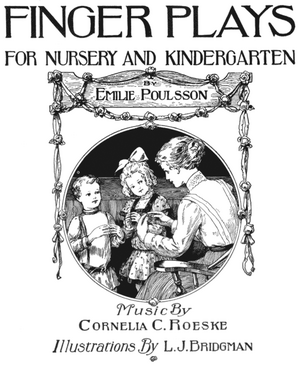Emilie Poulsson facts for kids
Anne Emilie Poulsson (born September 8, 1853 – died March 18, 1939) was an American writer who created books for children. She also worked hard to support early childhood education and the kindergarten movement. This means she believed in teaching young children and helped create special schools for them.
Her Early Life
Emilie Poulsson was born in Cedar Grove, New Jersey. Her father, Halvor Poulsson, came from Norway. He passed away when Emilie was still young.
When she was just six months old, Emilie developed a serious eye problem. This condition eventually caused her to become blind. Even though she couldn't see, she learned to read at home. She started public school when she was eight years old. Later, she went to high school at the age of twelve.
Emilie learned braille at the Perkins School for the Blind. This special school is located in Watertown, Massachusetts. Braille is a system of raised dots that blind people can read with their fingertips.
A Champion for Education
For several years in her 20s, Emilie lived with the family of Mabel Madison Watson. Mabel was a composer and music teacher. Later, Emilie taught and gave lectures in Boston, Massachusetts.
Emilie Poulsson strongly supported the ideas of Friedrich Fröbel. He was an educational expert who created the first kindergarten. Emilie wrote books for children and gave talks about how to raise children well. She traveled to Norway many times. With her sister, Laura E. Poulsson, she translated books from the Norwegian language into English.
Books and Poems
Emilie Poulsson wrote many books and poems for children. One of her poems, from a book called Rhyme Time for Children, is often used to encourage reading. It reminds us how important books are:
Books are keys to wisdom's treasure;
Books are gates to lands of pleasure;
Books are paths that upward lead;
Books are friends. Come, let us read.
Here are some of the books Emilie Poulsson wrote or helped to create:
- Kindergarten and Primary School for the Blind (with Michael Anagnostopoulos, 1884)
- Finger plays for nursery and kindergarten (1893)
- In the child's world (1893)
- Through the farmyard gate (1896)
- Love and Law in Child Training: A Book for Mothers (1899)
- The Runaway Donkey and Other Rhymes (1905)
- Top-of-the-World Stories for Boys and Girls (Translated from Scandinavian languages with Laura E. Poulsson, 1916)
- Rhyme time for children
- Baby's breakfast
- Mrs. Cat's dinner
- The Christmas Cake: A Story from Norway
- Holiday Songs And Every Day Songs And Games (1901)
- What Happened to Inger Johanne by Dikken Zwilgmeyer (Translation, 1919)


